
Like A Dragon: Infinite Wealth Review
A few years ago, the Like A Dragon franchise pulled off something very rare in a long-running game series - a complete genre shift in its eighth mainline installment. Yakuza: Like A Dragon dared to do what was seemingly impossible at the time, leaving behind the iconic yakuza beat ‘em up style and embracing a rebirth as a turn-based RPG with a completely new lead character to carry the torch.
This enormous gamble by RGG Studio paid off in spades; the Like A Dragon series witnessed another renaissance as Yakuza: Like A Dragon would go on to become one of its most successful entries. People around the world fell in love with Ichiban Kasuga and his newfound friends.
Like a Dragon: Infinite Wealth continues Ichiban’s story and, put succinctly, it is a masterpiece. I think this is the best game RGG Studio has made. There are a plethora of smart improvements across the board that iron out several of the unrefined aspects from Yakuza: Like A Dragon.
On top of that, there’s an aspect to Infinite Wealth that meaningfully and elegantly incorporates the entire series’ history to enrich certain themes surrounding the other main character - Kazuma Kiryu, Like A Dragon’s original protagonist. Believe me, I was extremely skeptical upon Infinite Wealth’s initial announcement when I heard that Kiryu would be coming back yet again with Ichiban, but Infinite Wealth absolutely justifies its decision to feature the pair as dual protagonists.
Infinite Wealth is as much of a follow-up to Yakuza: Like A Dragon as it is to Yakuza 6: The Song of Life and Like A Dragon Gaiden: The Man Who Erased His Name.
Before I delve into my review of Infinite Wealth, I will have to mention some key plot points that occurred in Yakuza: Like A Dragon to establish the premise of this game. Anything that specifically pertains to Infinite Wealth’s story itself will be spoiler-free in that regard.
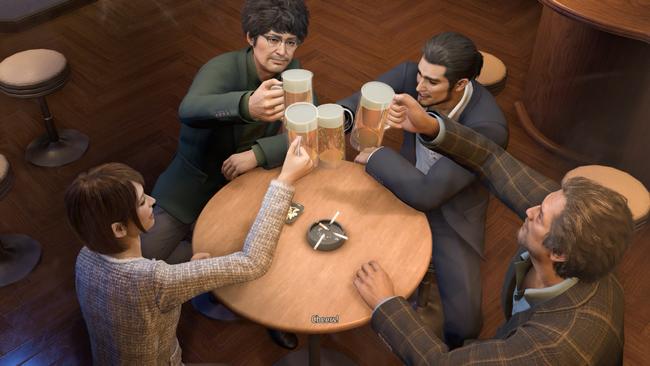
I adore how Infinite Wealth begins. One of the things that has drawn me into the Like A Dragon series again and again is its meticulous attention to worldbuilding. The state of society is always reflected in the decades that span the in-game timeline from the late 80’s in Yakuza 0, the mid 00’s in the first Yakuza, and so on. RGG Studio has generally done a great job depicting the gradual demise of the yakuza as society has become more and more modernized.
Infinite Wealth examines the ramifications of the Tojo Clan and Omi Alliance joint dissolution as it picks up a handful of years later after the events of Yakuza: Like A Dragon. Ex-yakuza members are still struggling to integrate back into society and Ichiban has found an avenue to assist them. I love RGG Studio’s commitment to emphasizing the messy aftermath that followed the disbandment of the two most important factions in the entire series up to that point; they could have easily wiped the slate clean to establish something entirely new, but they didn’t.
Eventually, circumstances lead Ichiban on a flight to Hawaii in search of the mother he never met. This is incredibly remarkable because Infinite Wealth is the first time that Like A Dragon steps outside of Japan. While Isezaki Ijincho returns from Yakuza: Like A Dragon, the star of the show is the city of Honolulu. Infinite Wealth’s rendition of Honolulu is rich, dense, lively, and utterly beautiful.

It isn’t long until Ichiban runs into trouble in paradise. Kiryu happens to be in the area to bail him out, though he’s there under orders from the Daidoji faction - a group that was introduced in the recent Like A Dragon Gaiden. What initially starts out as a vacation to meet some lost family turns into a much bigger case that will require both Ichiban and Kiryu to solve.
There are a ton of layers to Infinite Wealth’s story that I can’t get into. It is easily the most ambitious storyline RGG Studio has embarked on; the scope and length of it triumph some of the series’ longest entries yet between Yakuza 0, Yakuza 5, and Yakuza: Like A Dragon. Infinite Wealth’s main story is a saga of coalescing events that takes its time to flesh out the characterization of its involved actors. I was quite surprised to see how it went the extra mile for several individuals and I appreciated that.
I strongly believe Infinite Wealth has one of the best stories in all of Like A Dragon. It is substantially more impactful the more Yakuza games someone has under their belt. That isn’t to say that having a complete understanding of the Yakuza era is mandatory to understand Infinite Wealth’s story, but certain sequences and moments in Infinite Wealth will hit much harder. Even Like A Dragon Gaiden factors into this.
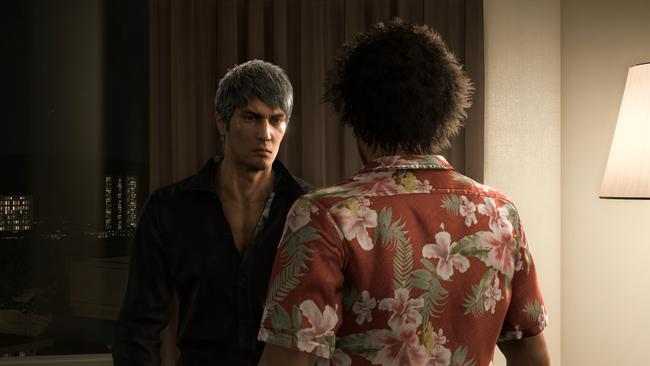
Not everything is completely flawless around Infinite Wealth’s narrative, though. A few sequences are repetitively utilized and some key parts are a bit too contrived or conveniently timed, but it wasn’t enough to break my enjoyment of how things played out. Some of the pacing in its storytelling is a bit compromised because of how the franchise historically incorporates introducing its new side activities into the main storyline, as well. It is especially noticeable in Infinite Wealth because the new location of Honolulu carries a ton of new side activities to enjoy.
Of course, while the main story is meaty and delicious, no Like A Dragon game is complete without a ridiculous amount of distractions, and dear god Infinite Wealth is insanely good at providing compelling reasons to engage with them.
The new Crazy Delivery minigame is RGG Studio’s parody of Crazy Taxi as Ichiban delivers the fine American cuisine of pizzas and burgers to as many locals as possible within the time limit. Photo Rally asks players to snap a picture of specific spots in town; completing it will reward players with some useful goodies. Sicko Snap is Infinite Wealth’s bizarre version of Pokémon Snap as Ichiban takes photos of deviants during his trolley rides.
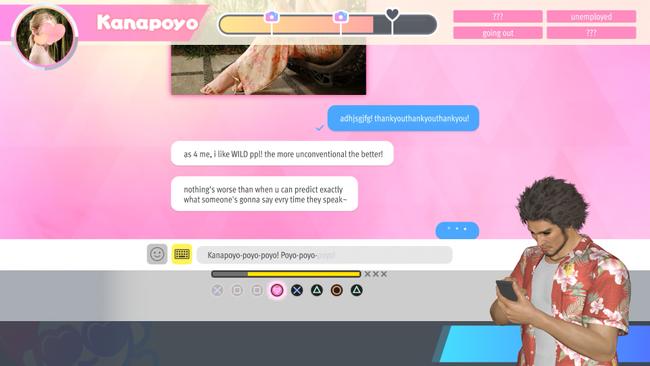
Like A Dragon’s dating activity is back in the form of the Miss Match app which is way more involved than I was expecting. Players customize Ichiban’s dating profile to be more compatible with certain types of potential partners, which then leads into a back-and-forth text conversation filled with selectable dialogue options and button prompts to properly type them out quickly. Can Quest and the Vocational School from the previous Yakuza: Like A Dragon also make a return.
Sub-stories retain their wholesome nature despite the change in location as they range from endearing to wacky to bizarre as usual. Since Infinite Wealth is on American soil, it doesn’t shy away from poking fun at American culture. Several sub-stories featured in Yakuza: Like A Dragon resume their storyline. While they’re still not fully voiced like in Yakuza 6, several sub stories in Infinite Wealth do see a bit more voice acting outside of just their intro and finale; there were segments that surprised me because they were voice acted.
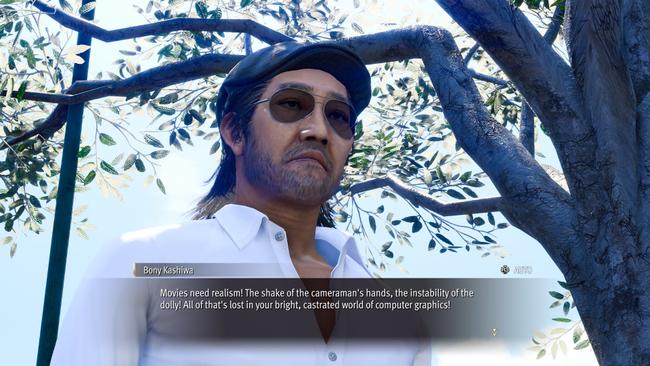
An early sub story unlocks the segway vehicle to cruise through Hawaii. Players can even mark a specific spot on the map and set it to auto cruise, so the game will navigate there on its own - though some small adjustments to its pathing are still needed here and there to zig-zag through potential battle encounters and vehicles.
Drink Links come back in Infinite Wealth to get more insight into a specific character’s small storyline. These are tied to numeric bond levels, and while raising these happens passively through a number of small activities, the most prevalent mechanic that directly interacts with this is a Bond Bingo card for every single character aside from Ichiban and Kiryu.
These are marked mini skits on the map that provide a tiny bit of flavor in further learning more about a character - their hobbies, bad habits, food they dislike, future goals, and more. It’s a nice touch in getting to know more about them that the main story has no reason to go out of its way for. A new type of link, Aloha Links, encourages players to simply greet or gift marked NPCs for minor personality stat enhancements to give extra flavor to Ichiban’s first international destination.
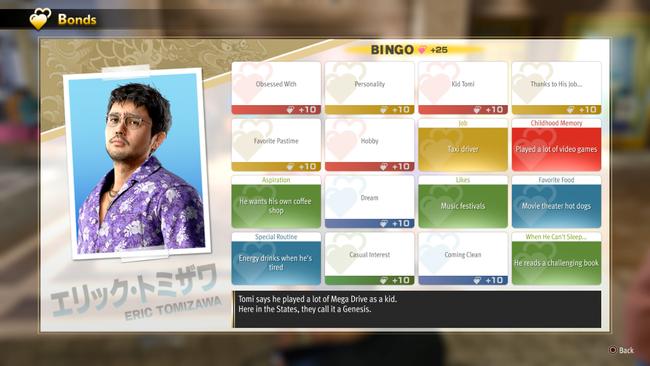
These are just a few of the smaller side activities to sink time into, though the biggest attractions in Infinite Wealth are the new Sujimon League and Dondoko Island pastimes.
Sujimon, the intentional Pokémon knockoff, was initially introduced in Yakuza: Like A Dragon though the only thing tied to them was filling out a Pokédex Sujidex. Infinite Wealth vastly expands this concept into an entire miniaturized Pokémon RPG experience filled with acquiring Sujimon, having them battle in a 3vs3 format à la Pokémon Masters, and training them to take on gym leaders before facing off against the best of the best. There’s a whole system of leveling, evolving, and awakening them; even raid battles to capture specific types of Sujimon or rolling on multiple gacha banners to fish for especially rare and powerful ones. An entire job class exclusive to Ichiban, the Sujimancer, lives and dies by how effective its equipped Sujimon are.
Meanwhile, Dondoko Island blends elements of survival, crafting, and town-building games as players gradually construct their ultimate island resort. There are distinct sections of the island that people have to clean up and clear out before those zones become viable places to build on. Oddly enough, a whole day-to-night cycle mechanic is incorporated into Dondoko Island; there’s only a certain amount of time allotted to do activities within the in-game days that is mutually exclusive from the base game.
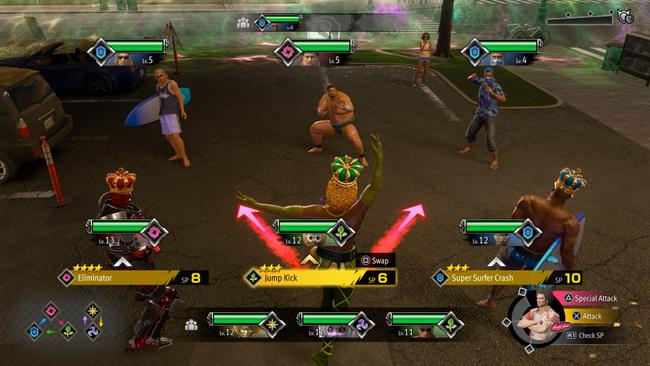
I eventually got addicted to Dondoko Island, but the early parts of it are admittedly tedious. Expect a lot of manual resource gathering as Ichiban relies on his trusty baseball bat to chop trees down and hit rocks for stones. Things become smoother a few hours in when guests can be invited over to the island. People will have three in-game days to satisfy them with the attractions and buildings they have on display. Once again, this side activity in Infinite Wealth is way deeper and more engaging than I expected the more time I put into it. The Sujimon aspect even comes into play when the Dondoko Farm area opens up.
Many parallels and comparisons to Animal Crossing will naturally arise, though it reminded me more of RollerCoaster Tycoon as I developed my island to support a larger population of visitors. NPC pathing as they emerge from their lodgings upon a new day was something I started to wrap my head around because it takes time for them to move around to physically interact with stuff, so finding effective layouts on where to place buildings, money sinks, and other attractions to drive their satisfaction up re-opened an itch I haven’t felt since RollerCoaster Tycoon. I did not expect that.
Another part of Dondoko Island that shocked me is the mode briefly unshackles players away from the turn-based combat into a real-time brawler once again - albeit in a very basic, limited fashion. Ichiban can run around and perform a dodge roll against resort invaders as he wacks them with his bat. This is implemented in a disappointingly clunky fashion, which surprised me because this series has well… an established formula and feel to how the brawling aspect is handled. It is the weakest part of Dondoko Island, and thankfully it’s the feature that takes relatively the least amount of time to dabble with.
An amusing technical compromise I noticed when placing more and more buildings down in an already densely populated space is the level of detail dropping off a cliff after a few inches from my character and the town-building cursor. My PC is beefy enough to handle this game at max settings with no significant performance problems, so I am sure it is a way for Infinite Wealth to remain stable. As the player’s Dondoko Island gets filled to the brim with more stuff, expect some level of compromise in the visuals to keep itself together.

Infinite Wealth contains other side material that specifically pertains to Kiryu himself. It would be incredibly difficult to get into it without outright spoiling what it is, so I’ll leave it at that for now. Series veterans will definitely be incentivized to pursue these things, which feeds into Infinite Wealth’s charm into making its side content more tantalizing this time around. Trust me, I really want to say more but I’d rather have people discover it for themselves.
When I played through and reviewed Yakuza: Like A Dragon back in 2020, one of the elements I found half-baked was its combat. It was understandable because that was RGG Studio’s first attempt at converting the beat ‘em up series into that format, so an unrefined first go at it wasn’t too surprising. Infinite Wealth further improves the turn-based battle system by allowing players to employ more versatile and flexible approaches during encounters.
One improvement that returning players will notice immediately is that they can now move their characters in combat. A circular zone on a character’s turn designates where they can move to and this will expand as they level up. This allows people to finetune the nature of their attack; if a character is near an interactable environmental object, an icon will indicate that the character is in range to pick up that item and attack with it if they choose to initiate an attack at that position.
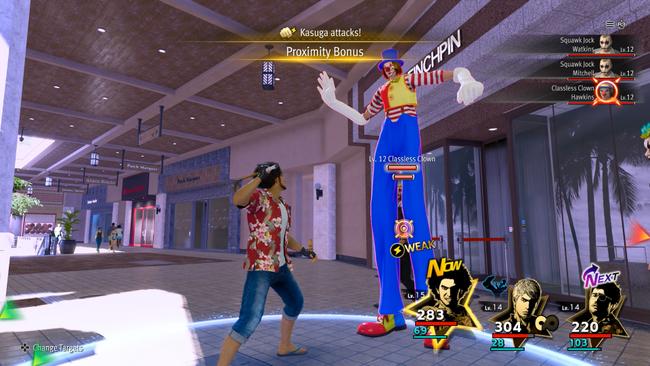
At higher bond levels, other characters besides Ichiban can execute a combo attack together if they attack alongside a nearby party member - which is also indicated through a distinct icon. Another quirk of this manual positioning is that basic attack damage can be increased with a proximity bonus should a character position themselves close enough before engaging their target; back attacks grant a substantial damage bonus, too.
An interesting universal tweak is that all basic attacks now replenish MP, regardless of what job class a character has equipped. Harder hitting attacks, such as environmental weapon attacks or back attacks, yield more MP; combo attacks with others restore the MP of both participants, though any follow-up attacks that trigger subsequently will not grant MP to that attacker. This creates an intriguing resource economy that enables players to be more flexible in firing off their skills without worrying too much about dedicated MP recovery phases.
Other battle enhancements come in the form of the vast amount of visual feedback the game communicates. If an attack or skill knocks an enemy back, it will show an arrow beneath them to indicate which direction they’ll be going. This makes it simpler to coordinate follow-up assists from other allies, since they’ll take a swing at any goon that comes flying their way. Area-of-effect skills convey concisely which zones they encapsulate, too.
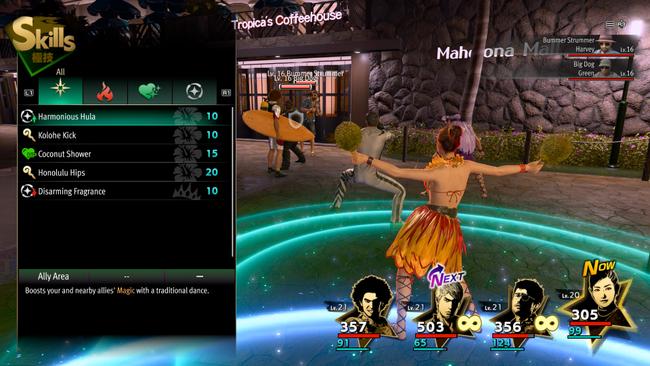
Enemies will no longer randomly punch a character running by them to hit another target, thus canceling their turn and taking unexpected damage due to wonky pathing. Foes that are blocking incoming attacks now have a shield icon when hovering over them, so skills with the grapple property have to be used first to break their guard; some select skills can bypass guard altogether.
Though there are considerable strides in giving greater control over manipulating the battlefield, I’d call it more of an imperfect science rather than a precise formula with reliable, repeatable results.
For instance, a large number of skills that would affect the whole party, regardless of where they were, in Yakuza: Like A Dragon have been toned down to now only affect a certain area and the magic stat can increase it. This means that an AoE healing spell might not be able to heal the entire party if a character randomly decides to step out of the area during its animation. Trickier skills that cover a straight line AoE may miss targets should they randomly decide to step out of it as the skill’s start-up animation plays out. Some job classes exhibit basic attack animations that don’t reliably follow the knockback marker it indicates. Small problems similar to those arise from time to time, but it was usually never enough to frustrate me.
All characters have a “hype meter” that allows them to fire off a tag team super with Ichiban or Kiryu, usually delivering a powerful attack while granting buffs to its participants. The hype meter functions a bit differently for Ichiban and Kiryu.
Ichiban can fire off a special attack that hits all enemies with other party members that have a full meter, as well. The more people that participate, the larger the damage increase will be - at the cost of consuming their meters simultaneously.
Kiryu returns to his beat ‘em up brawler roots temporarily with his meter. This mode allows Kiryu to relentlessly attack in real-time endlessly, though it isn’t as robust as previous brawler entries; it can still do an incredible amount of damage regardless. It’s a nice touch for him, yet the more interesting side is how RGG Studio implemented Kiryu into a turn-based format.

With his base job class, Dragon of Dojima, Kiryu foregoes the ability to equip a weapon in exchange for his three fighting stances (Brawler, Rush, and Beast) that were last seen in Yakuza Kiwami. Players can switch between them freely on Kiryu’s turn, but the circular zone he can move around in is directly affected by them with Rush granting the most mobility and Beast bearing the least. They all have different properties and proximity bonuses, which is a pretty clever way to translate the personality and attributes of each stance into a turn-based RPG style.
The job class system from Yakuza: Like A Dragon makes a return with many new options and a handful of reliable ones returning from the previous installment. Due to an overhaul on how stat allocations are handled on a character’s level up versus a job’s level up, players incur substantially fewer stat penalties when switching a character to a new fresh job. This allows the entire roster to cycle through more classes easily without feeling gimped right from the get-go.
Perhaps the biggest improvement Infinite Wealth introduced is the skill inheritance system for job classes. This allows players to carry over a handful of skills from any job, barring Sujimancer, into another class; those who want Ichiban to be a Chef that can whip out a few skills from the Samurai and Hero classes can do so freely as long as he leveled up those jobs enough to acquire those skills. Additional skill inheritance slots open up for Ichiban as his personality trait levels increase, while increasing others' bond levels grant them more slots.
This grants significant freedom for players to customize their party compositions because each job is no longer bound by their toolkits alone. High magic stat classes, such as the returning Idol, may be able to squeeze out more damage from Kunoichi’s spells, for example. Some skills are more effective based on how buffed a certain stat is, so another class may be a natural supplement to it.
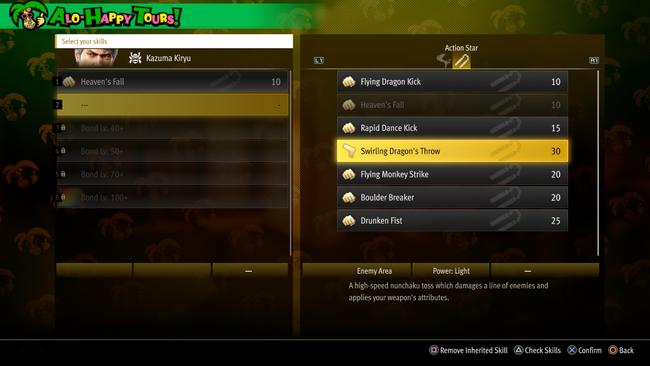
Thanks to skill inheritance, skill lists for characters can get lengthy. There was a way to bind shortcuts for skills to always show up at the top of the list to quickly access them in Yakuza: Like A Dragon. Unfortunately, this handy feature was strangely removed in Infinite Wealth so there’s no easy way to choose useful skills rapidly.
Crafting weapons in Infinite Wealth meshes quite nicely with the overhauls that the job system received. Each weapon can be further enhanced with additional stats and elemental properties with materials; skills distinctly mention if they will apply a weapon’s attribute in their description when they’re fired off.
Plus, other materials can further enhance a weapon’s stats minimally, but the real kicker is that some level thresholds open up a new “brand slot” to add certain modifiers to them. These can range from the standard attack increase, raising the damage of a certain element, increasing the chance to inflict an ailment that a weapon can inflict, and so on.
Jobs create a nice chemistry with these additional systems in weapon crafting because some classes perform exceptionally well if an enemy is suffering from a specific ailment. Several Samurai skills will deal significantly more damage if a foe is bleeding, so a character with a higher agility stat should ideally be able to inflict bleed reliably first to make way for the Samurai’s devastating onslaught.
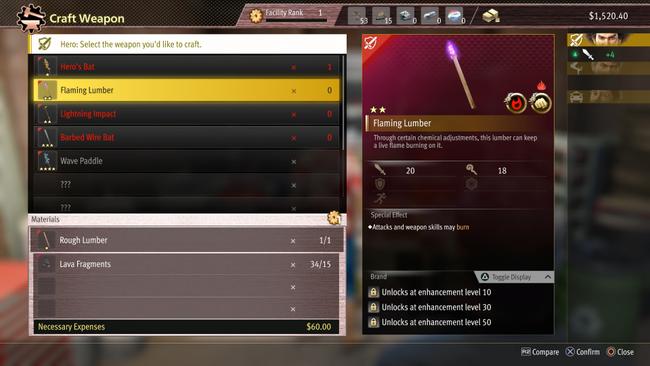
Poundmate summons make their return, as well. They function similarly to how they were utilized in Yakuza: Like A Dragon, though some of them can now linger on the battlefield for a set amount of turns to continually apply their effect. If enough money is invested into Poundmates, people can spend an additional fee to enhance the effects of an incoming Poundmate. Some specific additions to the roster this time around that will put a smile on series fans.
There are many quality-of-life enhancements in Infinite Wealth and the noteworthy ones I’d like to mention are the small tweaks to make fast traveling even faster, better signposting of potential difficulty spikes, and the new Smackdown feature against lower-level enemies.
Fast traveling to a nearby cab can be done anywhere instantly on the map directly from the map screen. This is immediately noticeable during the early sections in Isezaki Ijincho because all of the taxi cabs will be considered discovered already. To encourage exploring as much of Honolulu as possible, the entire map will be grayed out upon arrival, but taxis will be marked as soon as people uncover them on the map. It is the fastest access to fast travel that the series has ever seen.
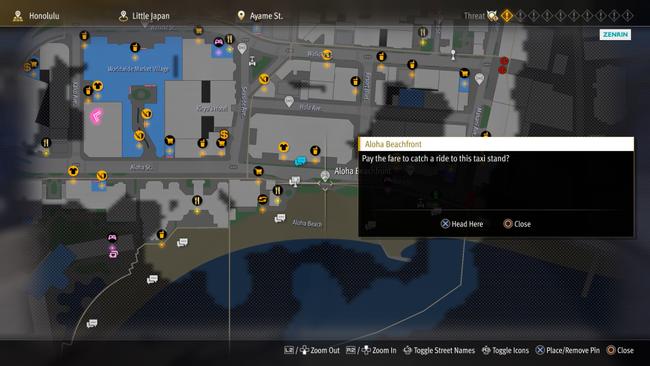
A common complaint in Yakuza: Like A Dragon was a few notorious difficulty spikes that came suddenly out of nowhere. This was especially true against the boss battle that involved some familiar faces. To address this situation, RGG Studio has put a recommended level and equipment quality notice before embarking on lengthy plot segments. While the final stretch of Infinite Wealth does have a fair bit of challenging encounters, the game will not pull any nasty surprises thanks to its better signposting of the general power level it expects people to be at in advance.
Lastly, running into lower-level enemies in Yakuza: Like A Dragon was a drag that forced people to sluggishly play out their fights or run away because they chased after Ichiban’s crew. Infinite Wealth introduces the Smackdown prompt upon a battle transition into blue lower-leveled mobs that ends the battle in several seconds making running around areas more pleasant without worrying about wasting time needlessly. It’s a very fast, easy way to earn job levels on characters that have just switched to a new one.
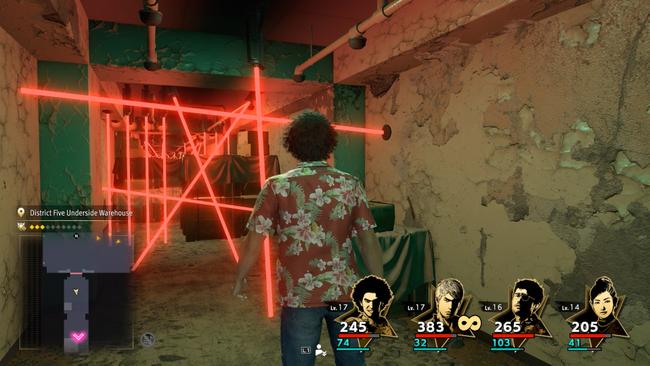
I played Infinite Wealth with Japanese voices because I’m so accustomed to them as someone who has played all of these games since the beginning. Even on this setting, there is an appreciable number of English voices lines found mixed into it for the side cast in Hawaii. Certain characters employ their English dub when speaking to someone in English and some of the enemy mobs are, well, American so they run after players yelling in English.
It achieves a level of believability and immersion in audio design that I’m not quite sure how it lands in the game’s other voice languages. Ichiban natively speaks Japanese and part of his early troubles in Hawaii stems from his struggles to communicate in a language that the people around him can’t understand. This is not meant to say that the other voice languages in Infinite Wealth are inferior in any way; it’s more of an examination that playing this with Japanese voices for me painted an interesting picture on that end of the spectrum.
A simultaneous worldwide release is always a good thing, though in the case of Infinite Weath, it invites one disappointing problem - the nature of this title's New Game Plus. For Infinite Wealth, NG+ is locked behind DLC and is not present in the standard edition of the game, along with other bonuses. This has been the norm in the Japanese releases for some past games - but it doesn't make it any less despicable. In fact, with achievements locked behind NG+, it's the one truly black mark on an otherwise excellent game.
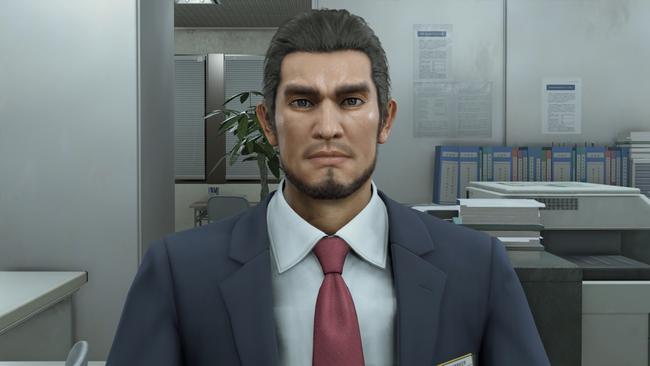
Like A Dragon: Infinite Wealth is a spectacular experience from start to finish. Myriad improvements to combat, utterly compelling side activities, and a plotline-enriching dual protagonist setup make this a brilliant and beefy package. A thorough first playthrough took me over 80 hours to finish. Infinite Wealth is incredible, and stands as one of if not the best game RGG Studio has ever made.